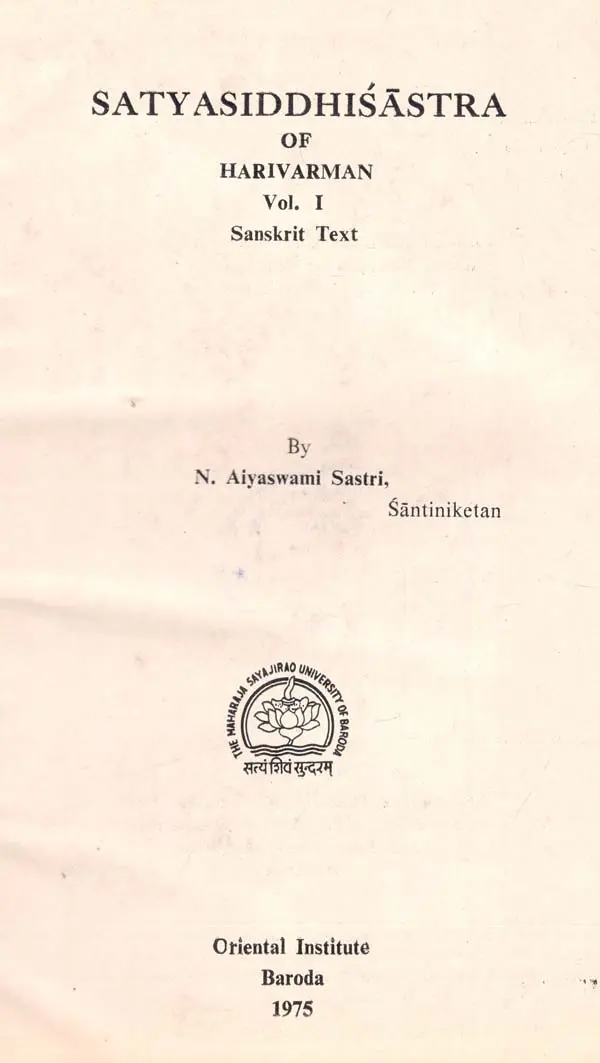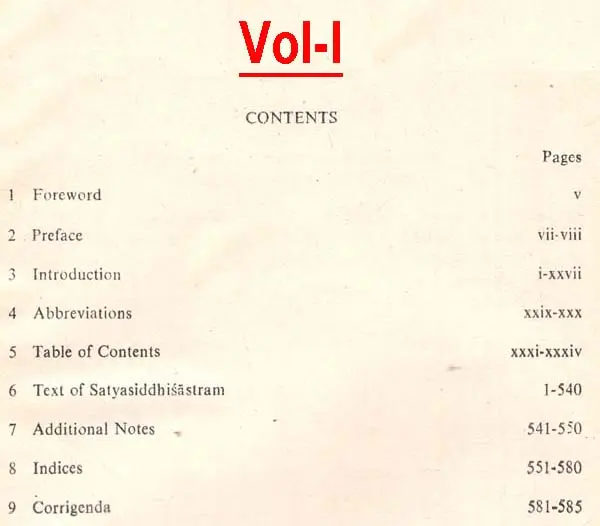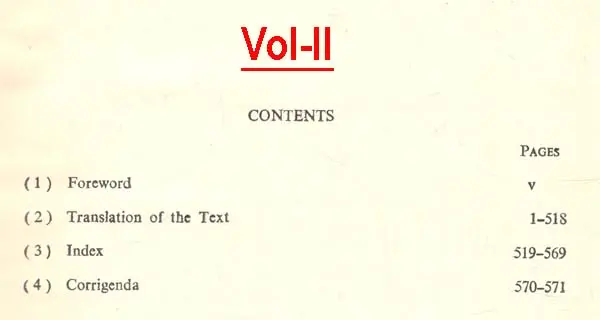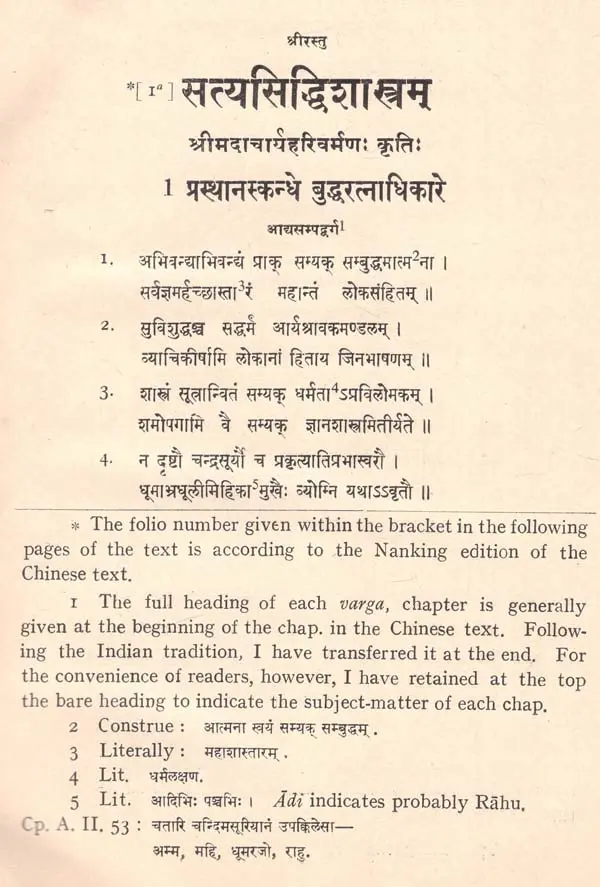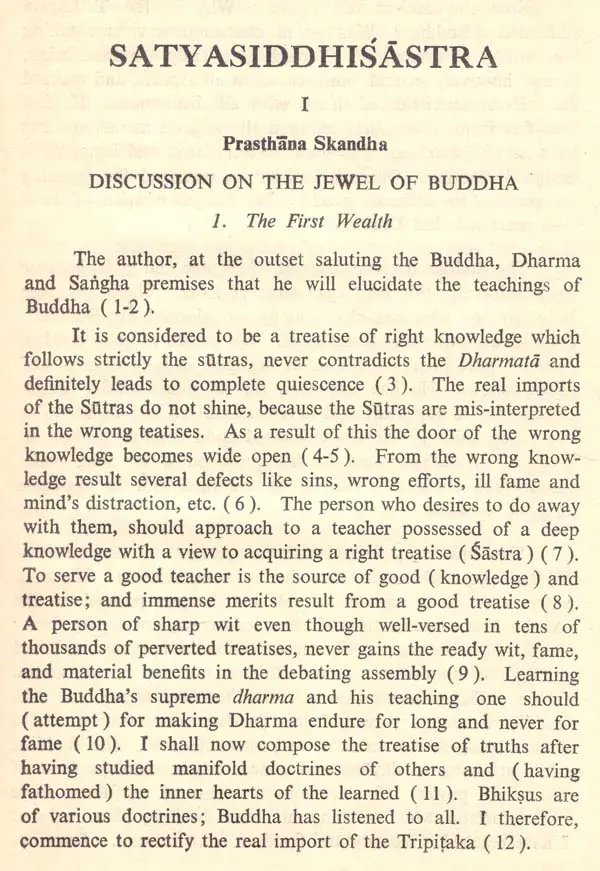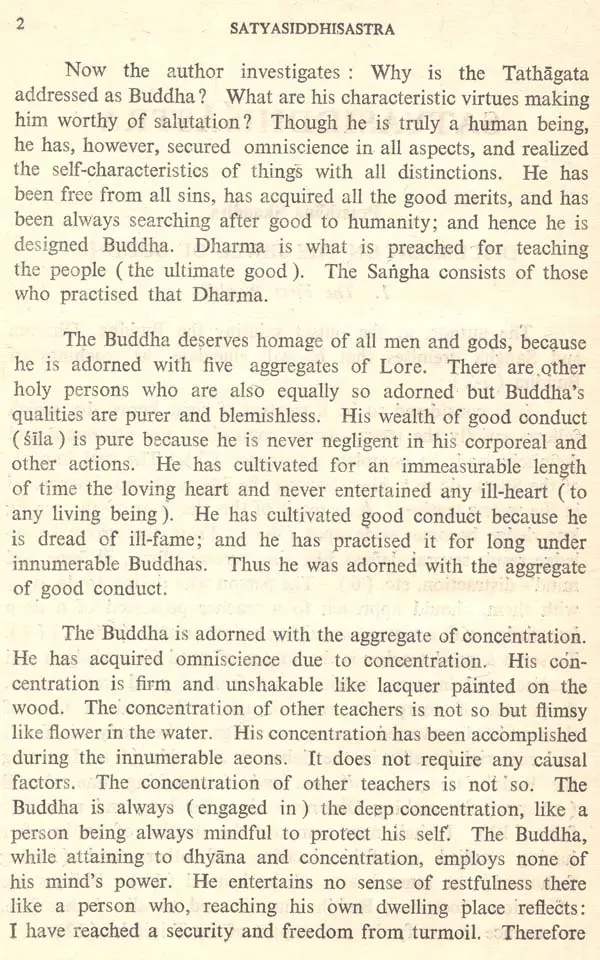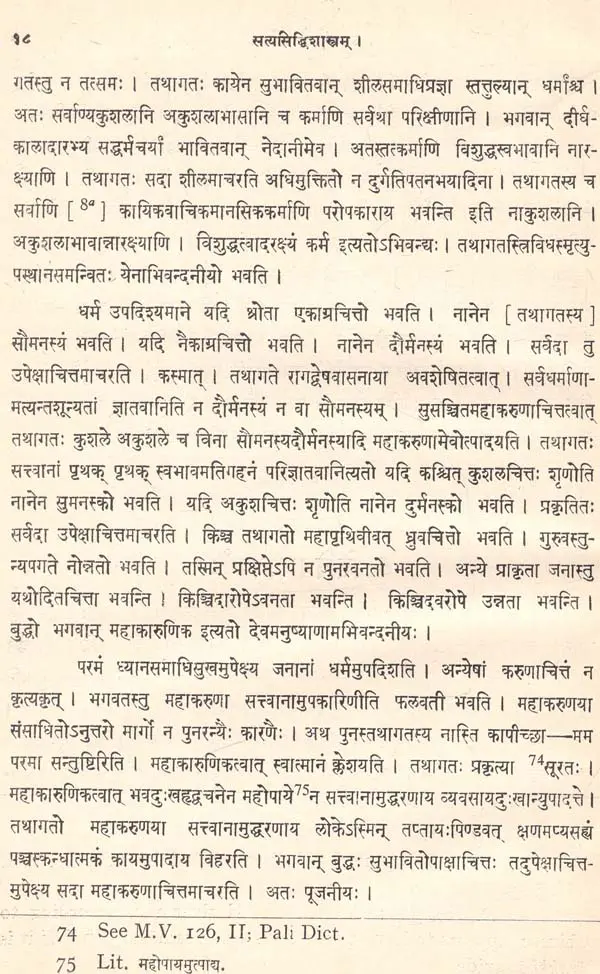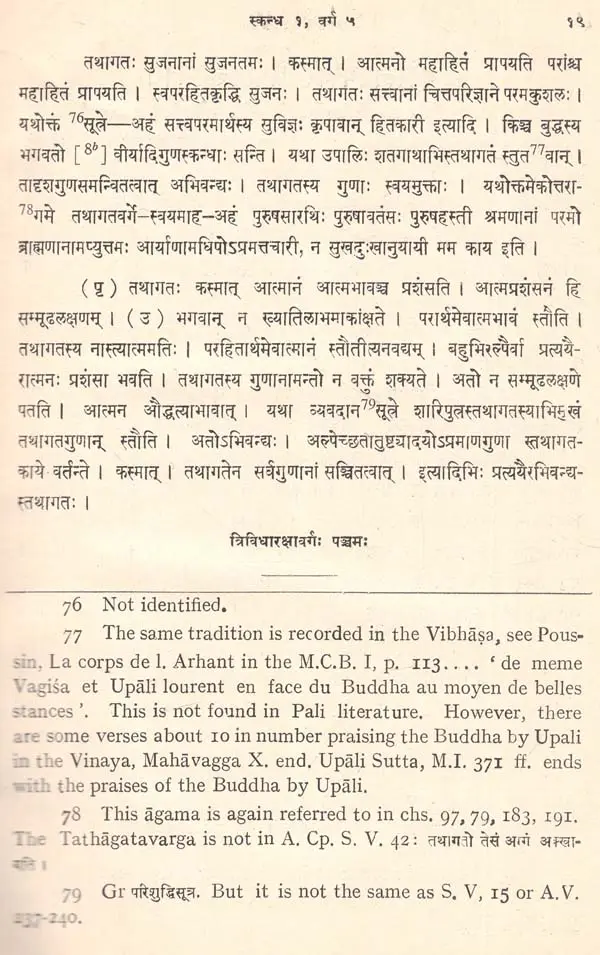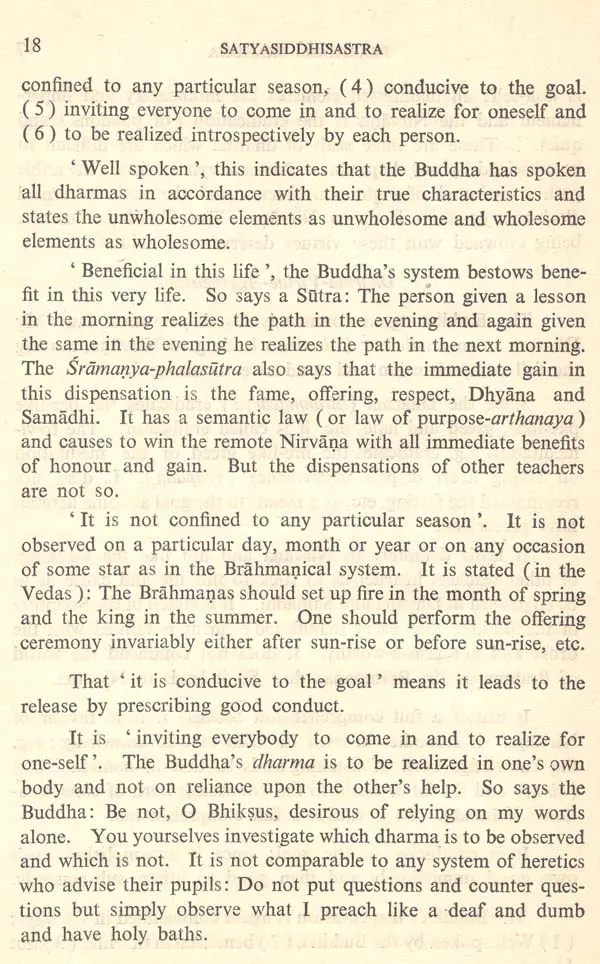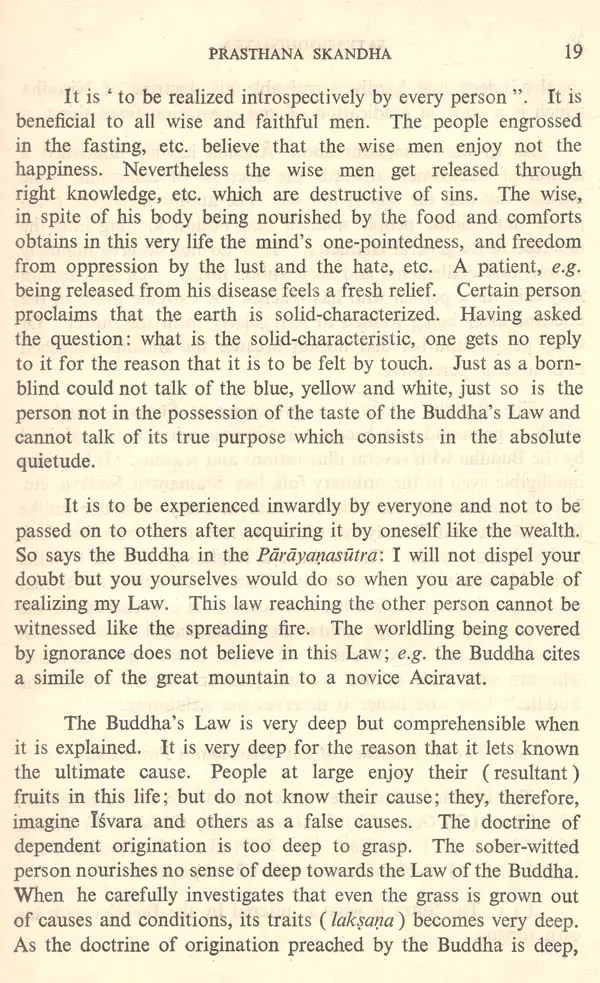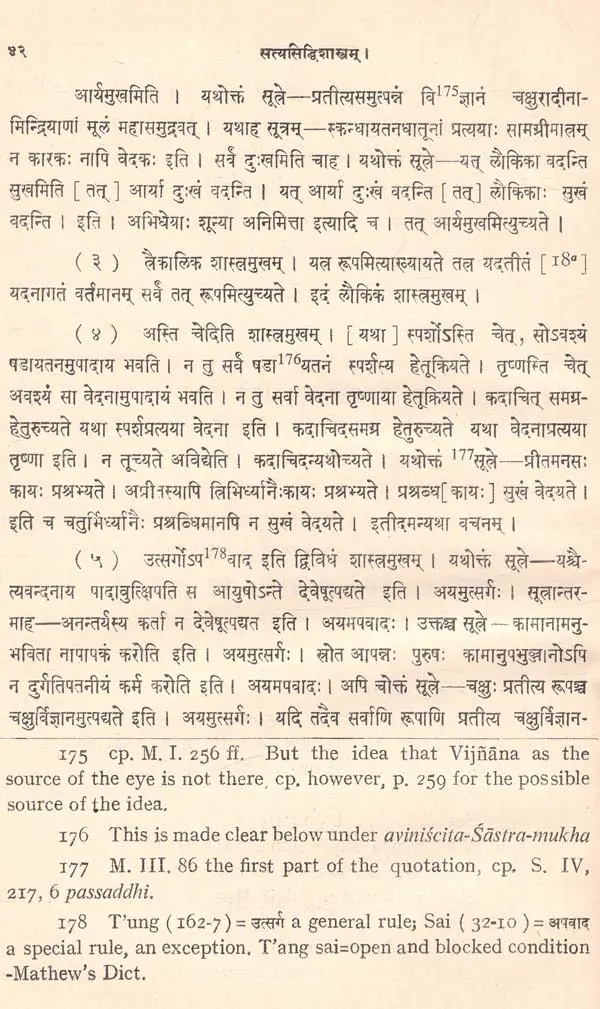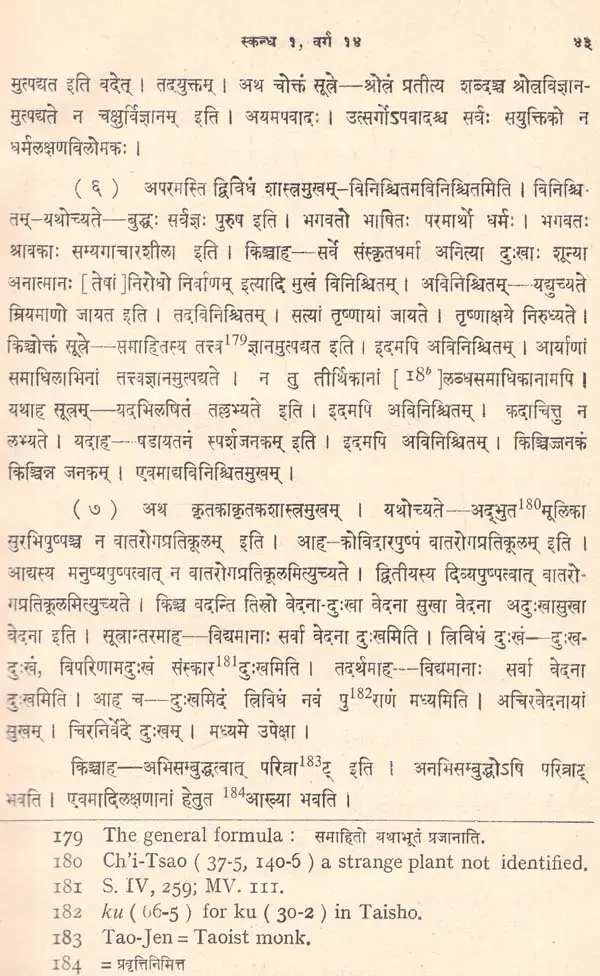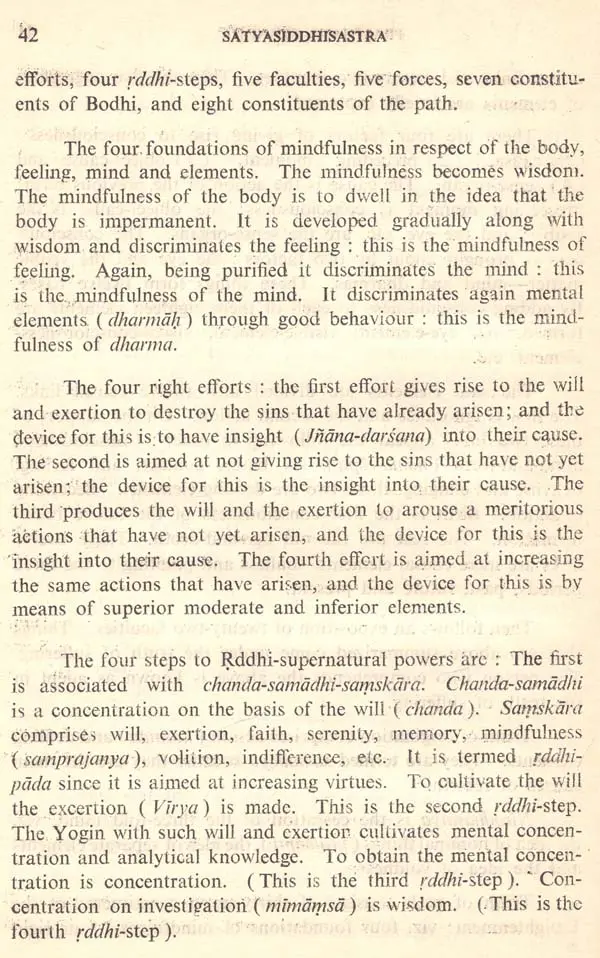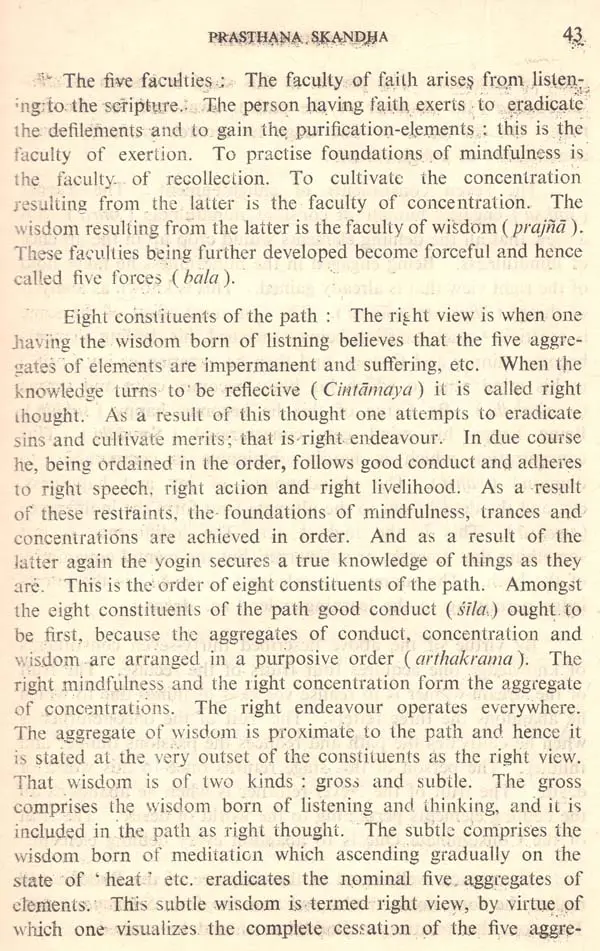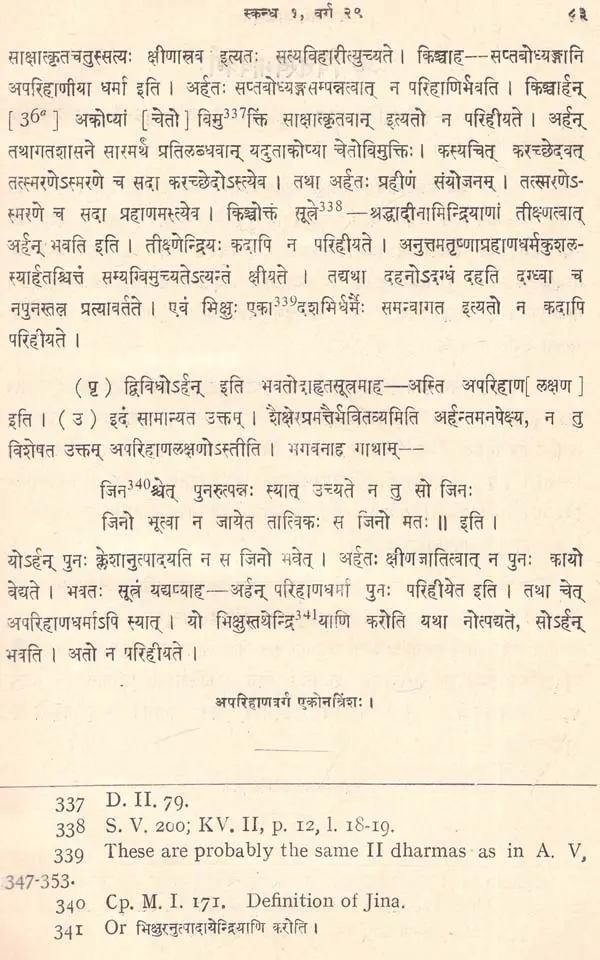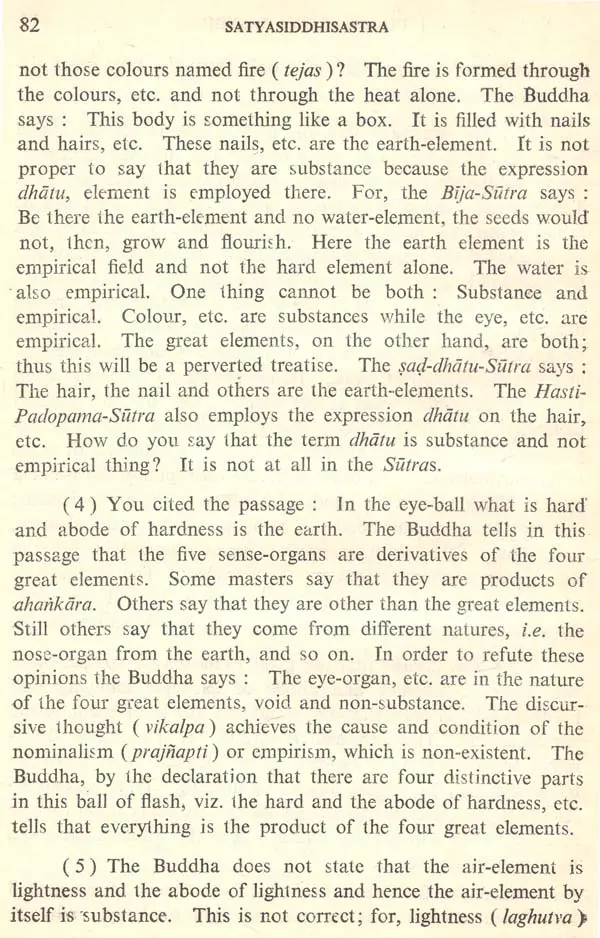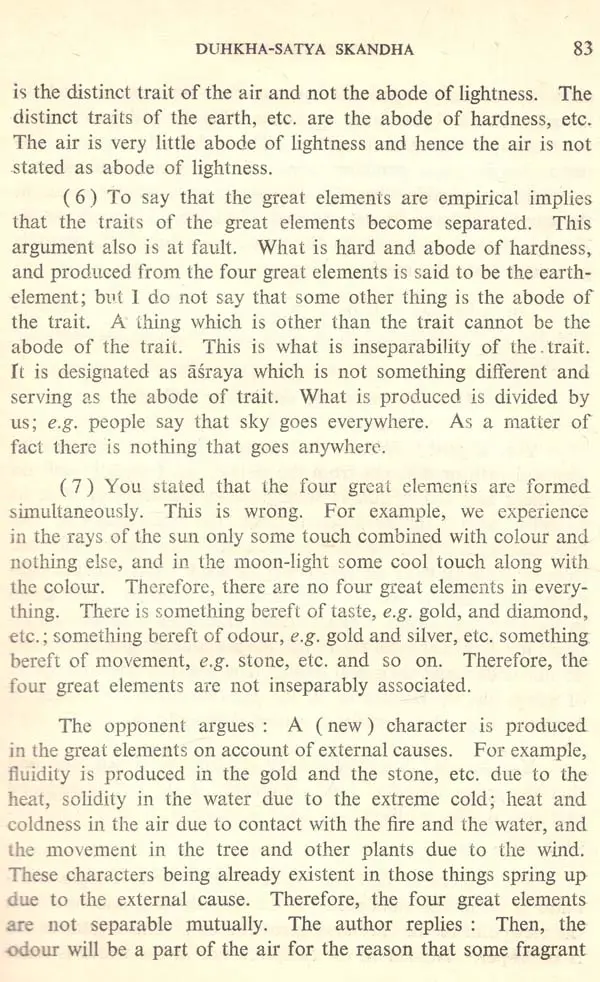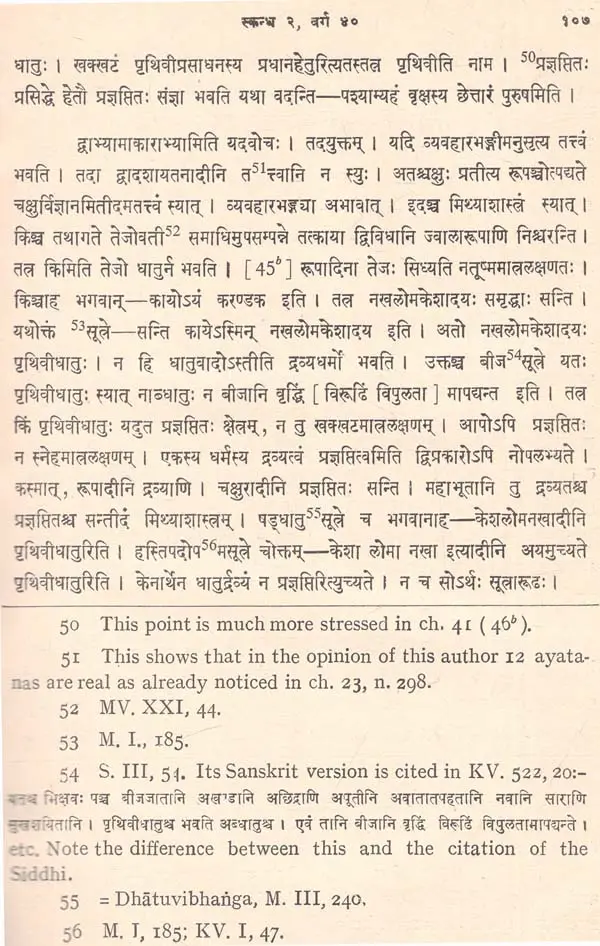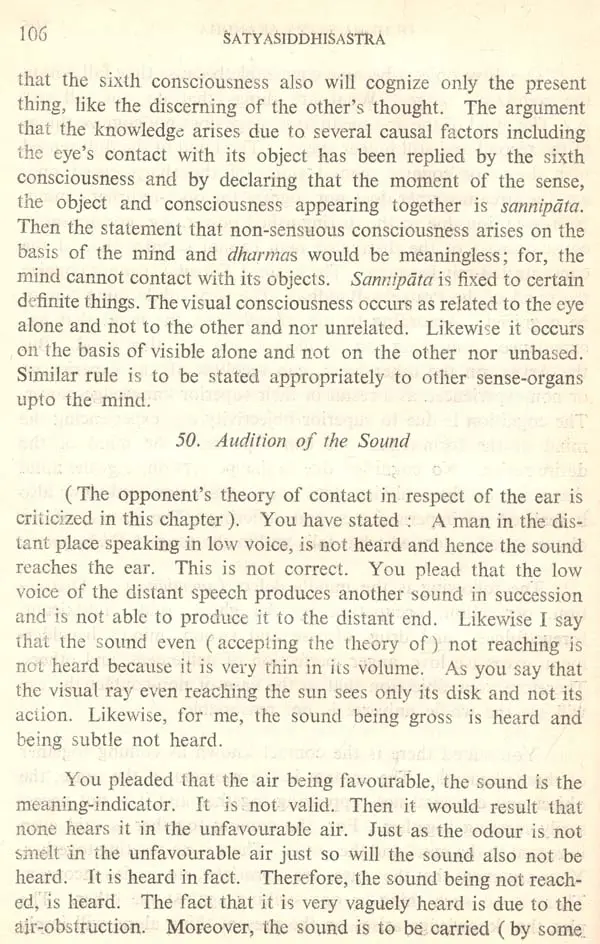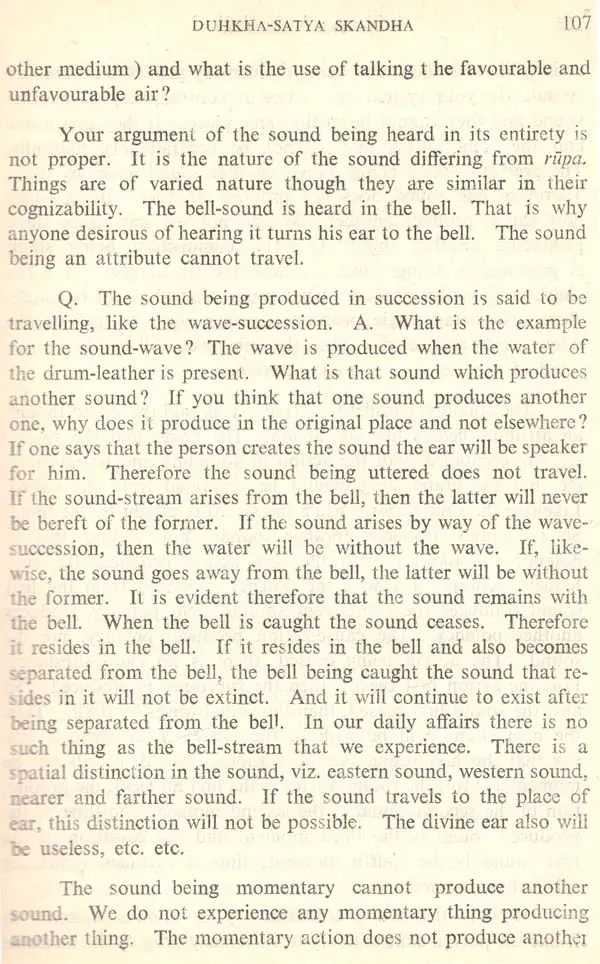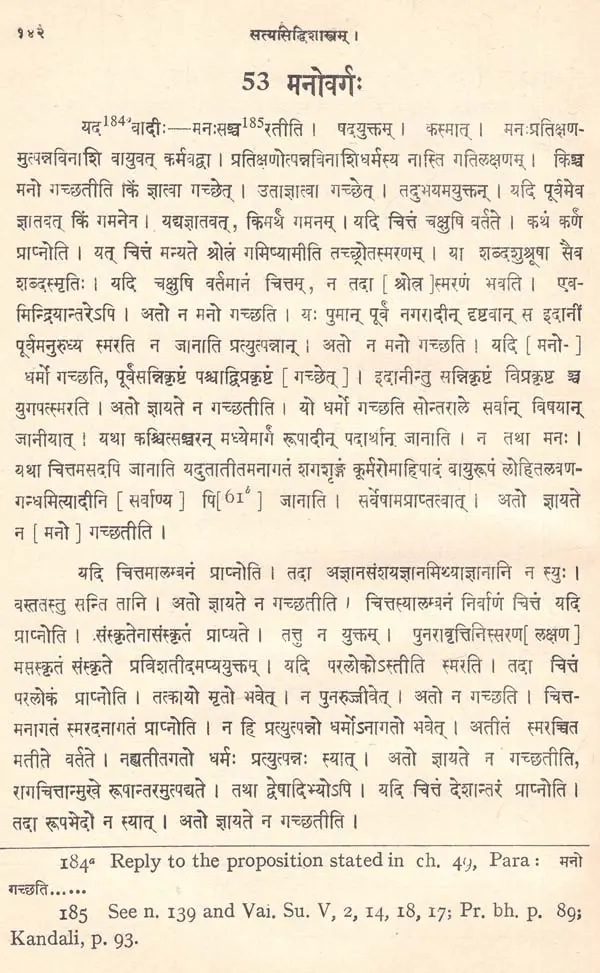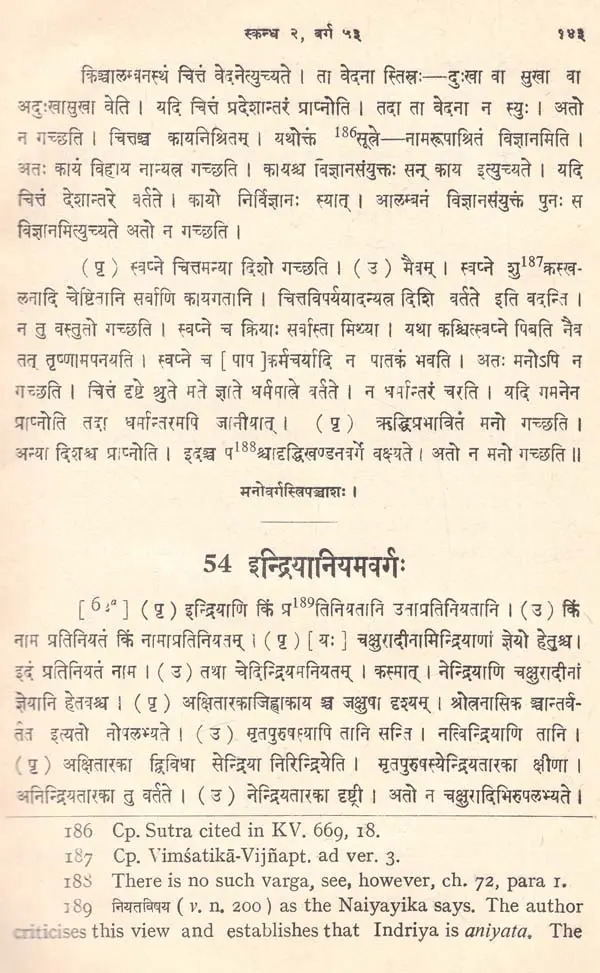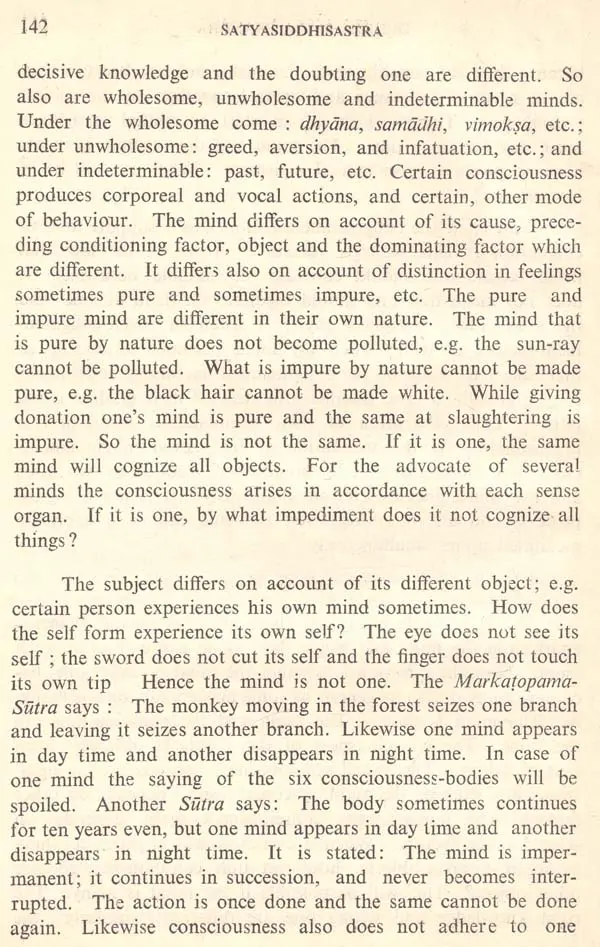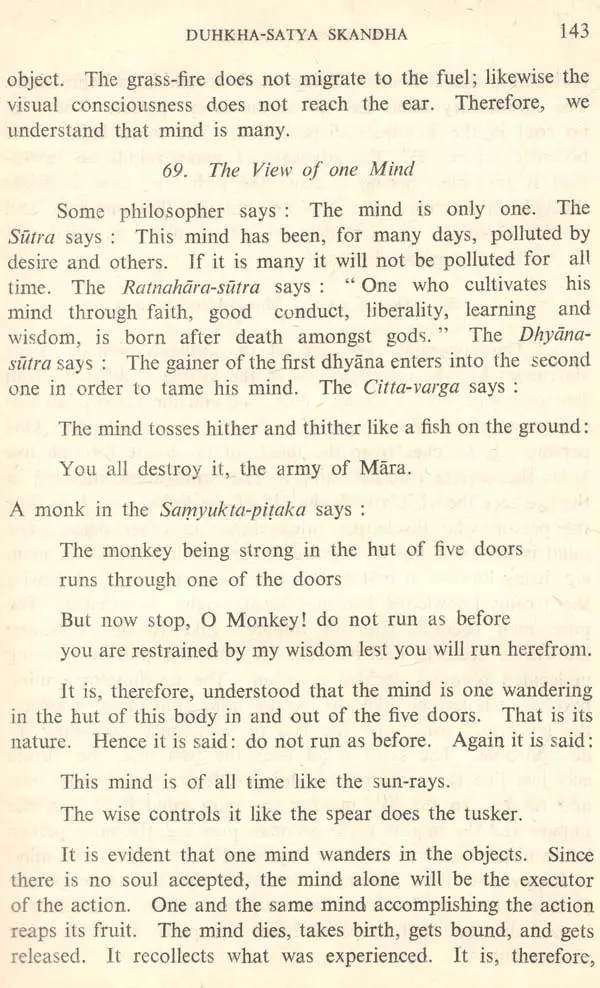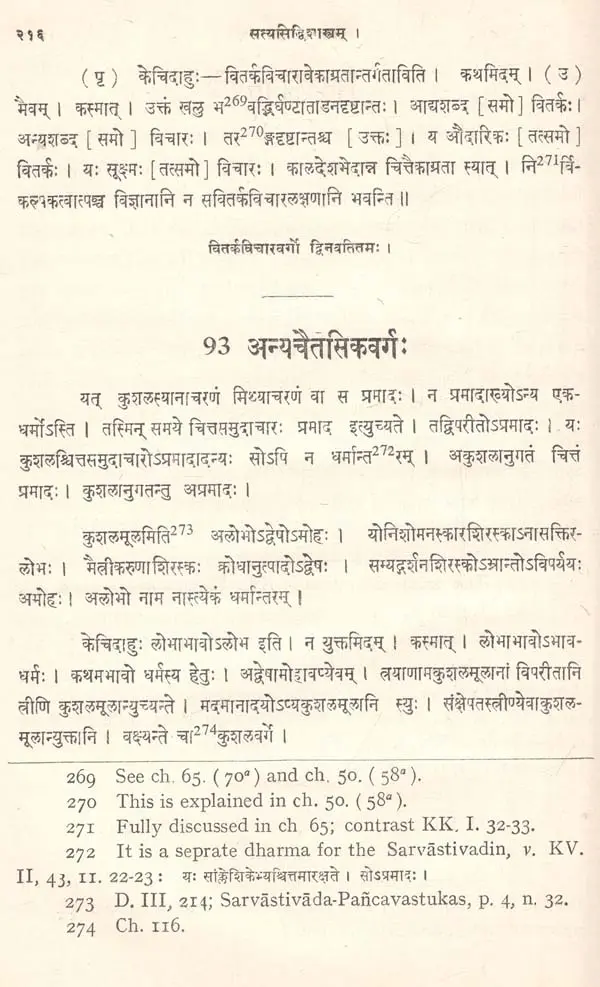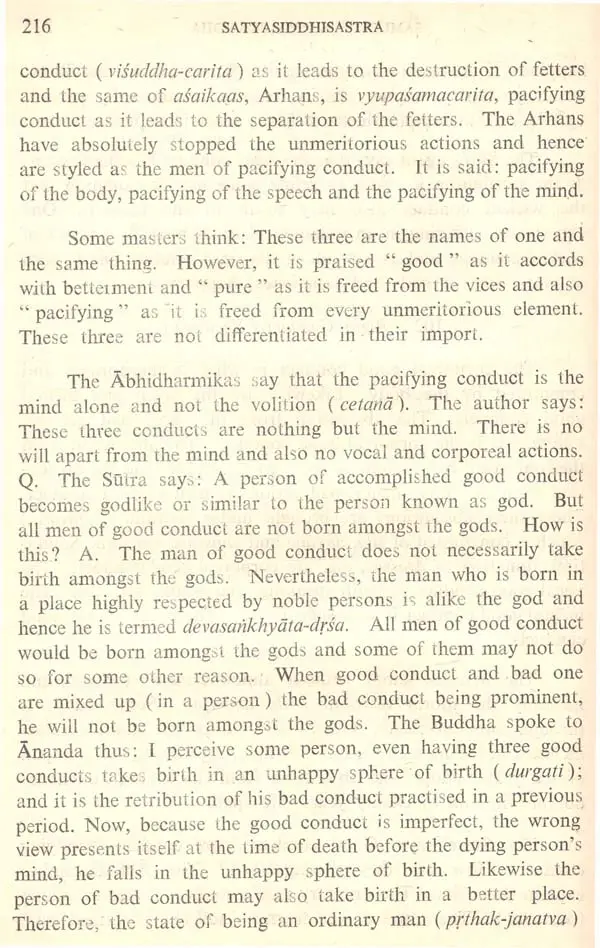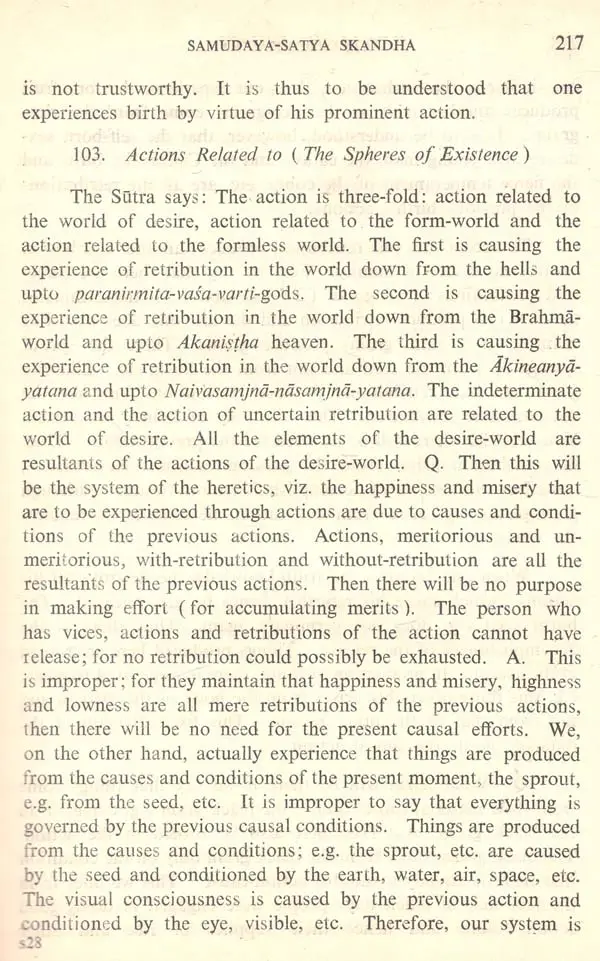
सत्यसिद्धिशास्त्रम्: Satyasiddhisastra of Harivarman (Set of 2 Volumes) (An Old And Rare Book)
Book Specification
| Item Code: | UBD434 |
| Author: | N. Aiyaswami Sastri |
| Publisher: | Oriental Institute, Vadodara |
| Language: | Sanskrit Text with English Translation |
| Pages: | 1154 |
| Cover: | HARDCOVER |
| Other Details | 10.00 X 7.00 inch |
| Weight | 1.97 kg |
Book Description
It is my privilege to introduce to the world of scholars the Devanagari version of the famous Buddhist work Satyasiddhi. The Satyasiddhi is supposed to be a handbook of Abhidharma by Harivarman, who according to Paramartha was a follower of Bahuśrutiyas. The only surviving version of it is Kumarajiva's Chinese translation of 412 A.D.
The Bahuśrutiya school is mentioned in the inscriptions from Nagarjuna- konda and Amaravati and is said to be later branch of the Mahasanghikas. According to Paramartha, this sub-sect made an attempt to reconcile the two principal systems of Buddhism the Sravakayana and the Mahāyāna. Harivar- man's Satyasiddhi is regarded as a principal treatise of this school.
According to Kumarajiva's statements, H.Ui, in the Vaisesika Philosophy (London, 1917, p. 43), calculates the time of Harivarman, the pupil of Kumara- lata and the author of the Satyasiddhi-sastra, in about 260 or 270 A.D. The editor of the present Devanagari text has placed him in 253 A.D The present work is edited and translated by Pandita N. Aiyaswamy Sastri, Professor of Buddhist Studies, Visva-Bharati, Santiniketan who is a well- known Buddhist Scholar. In his introduction he has given a critical study of the theories and views of Harivafman and shown that "Harivarman discloses nowhere in his treatise his own predilection towards any sect or school. He, on the other hand, says in ch. 13 that he composed the treatise and set it up as a separate system or school (i-pu)".
In the very beginning, Harivarman claims that his treatise is of right know- ledge and follows strictly the spirit of the Sutras. Harivarman appears as a strong critic of those that to him appear as not confirmed and sanctioned by the scriptures. The author's unique contribution to Buddhism lies in his masterly exposition of the theory of elements.
The present volume contains the text only with the Editor's Introduction and Indices. The second volume will contain an English Translation of the Text.
I am thankful to the University Grants Commission and the Government of Gujarat for giving financial aid towards the publication of this text which holds a unique place in the history of Buddhist thought and which is an early work belonging to the third century A.D., hitherto lost in its Sanskrit form.
Acarya Harivarman's SATYASIDDHI has been evaluated by Orientalists as one of the priceless treasures in Indian literature. Since the original Sanskrit of this invaluable treatise has been perished forever leaving behind an imperfect replica into Chinese translation we have to fall back upon this translation for an appraisal of its entire contents. The Chinese translation was made by Kumara- jiva in 412 A.D. and fortunately has been preserved in the collection of Chinese Tripijaka (v. Nanjio No. 1274). The present Sanskrit rendering from the only Chinese translation of the treatise was undertaken by the present writer as a part of research work under the scheme of Cultural Fellowship sponsored by the Nationalist Government of China in 1945 under the auspice of the Visva Bharati. The Chinese text that I have used here is one published by the Sutra Engraving Institute, Nanking corresponding to the Taisho Edition, Vol. 32, No. 1666, pp. 239 ff.
It is our common experience that the Chinese being a monosyllabic language the translators use to simplify all the complicated ideas expressed in Sanskrit. We cannot, therefore, expect in Chinese a verbatim reproduction of all our Sanskrit expressions as we do in Tibetan translation. European scholars generally undertake to translate the lost Buddhist texts from the Chinese into their mother tongues like English, French, German and Russian, etc. but none has attempted so far to do into Sanskrit. It was Dr. G. Tucci who was, perhaps, the first to put into Sanskrit a Chinese text of Sanskrit origin and published in the Gaekwad's Oriental Series. In view of the fact that there is hardly any chance to unearth those Buddhist Sanskrit texts which are lost in their original, but fortunately preserved in Chinese translations, it appears, the only way open to us to recover these literary treasures of India is to retranslate them into Sanskrit in a systematic manner and fill in the gap left in the long evolution of Indian thought and culture. This has been prime purpose of my embarking upon the task of retranslating into Sanskrit those Sanskrit texts from their only Chinese translations. I have already worked out and published a few Sanskrit texts in this line of research.
